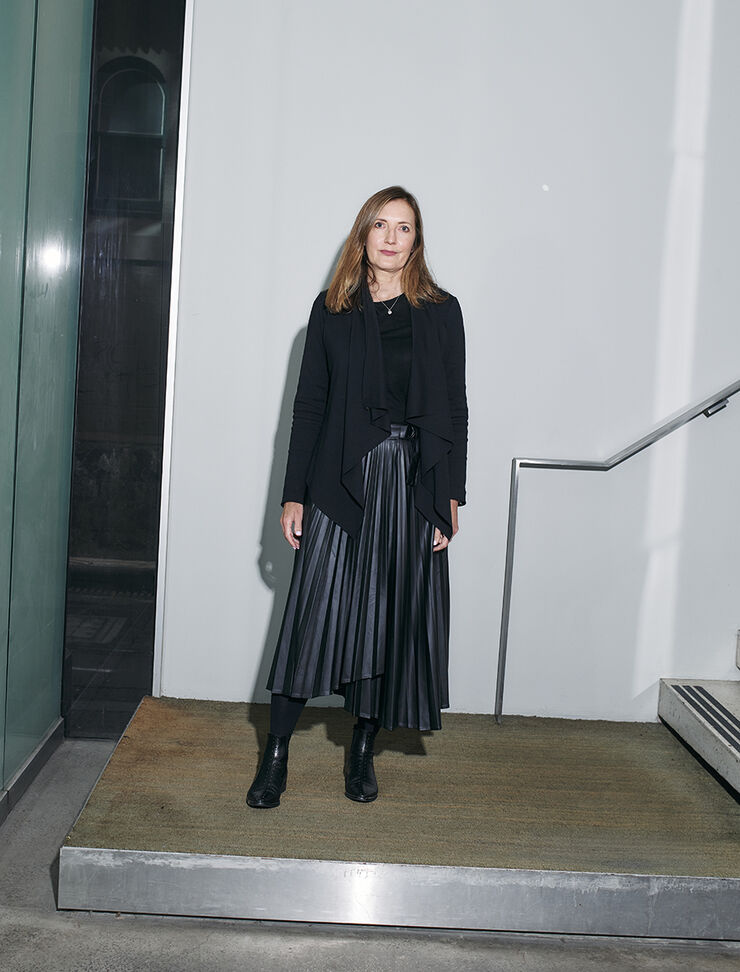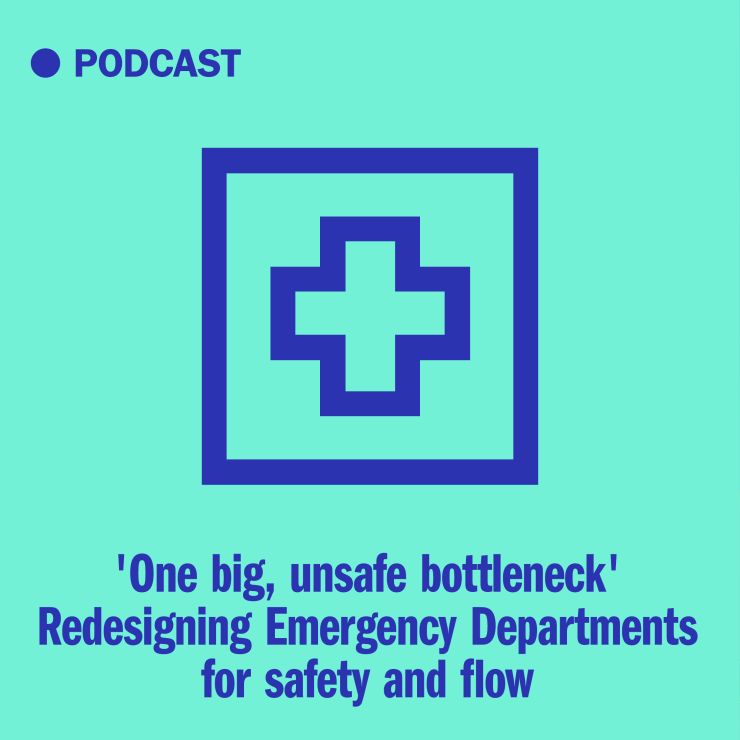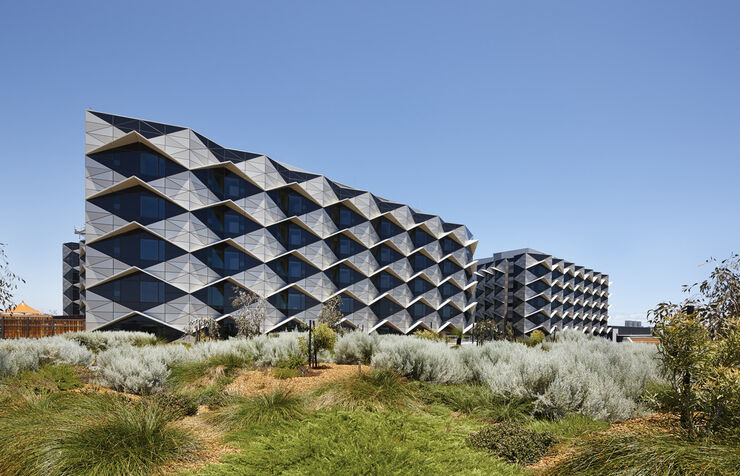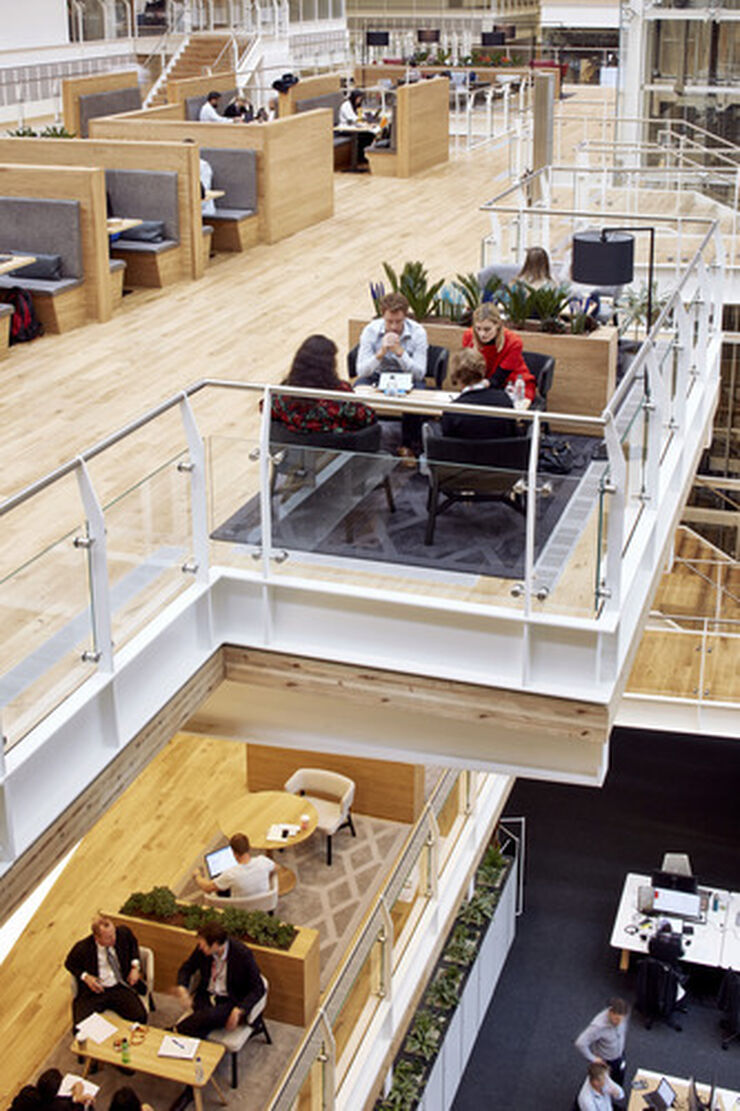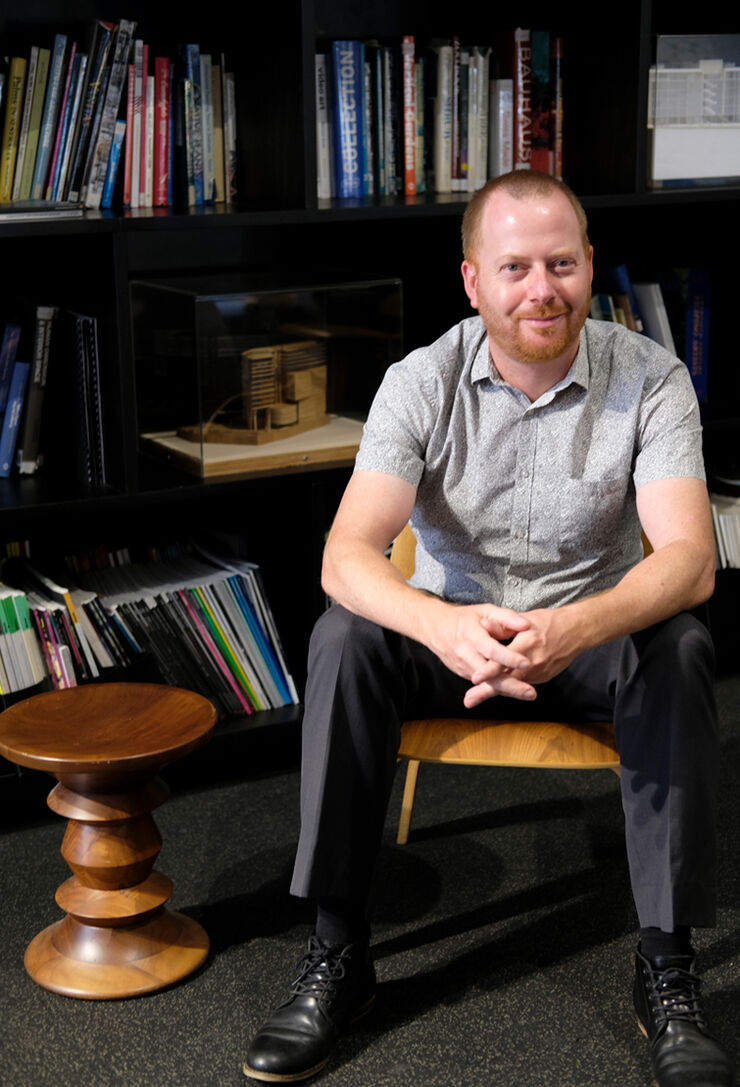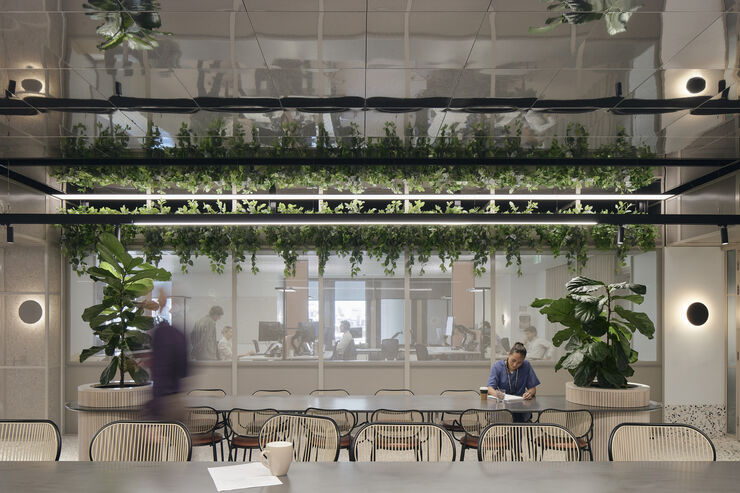Transcript
Dr Emma Thomas:
What COVID created, I guess it was the ultimate disruptor.
Karen Lucas:
The general culture now is we can’t go back to the way things were, from a service-delivery perspective. So telehealth and those things are here to stay.
Leanne Guy:
It’s challenging us a little bit more to think about how we design our facilities. It’s not just going to be following the guidelines and rolling it out.
Michaela Sheahan:
There’s suddenly a lot of talk about telehealth, which might be a little bit galling for all the people that have been slowly but surely developing it quietly in the background for decades. Last year, in the blink of an eye, Australia, like many places around the world, flicked the switch and began delivering telehealth on a pretty grand scale when the government announced Medicare funding for telehealth consultations.
Greg Hunt:
Thanks very much, Prime Minister. What we are doing now is a radical transformation in the way in which we deliver our health services. As of tomorrow, we will have universal telehealth available in Australia.
Michaela Sheahan:
I’m Michaela Sheahan. Australian GPs, hospitals, and specialists went from delivering 1 million telehealth consultations in March to 6 million in April. What did that mean for our healthcare services in the heat of the moment? And most importantly, to Hassell, what does it mean for the hospitals that we will design in the future?
There are lots of ways to describe what we’re talking about here. There’s telehealth, there’s virtual health, there’s home-based care, there’s digital care. We looked at telehealth specifically as either a telephone call or a video consultation between a patient and a clinician, or between clinicians themselves.
Karen Lucas:
Currently, we have about 130 services running telehealth.
Michaela Sheahan:
Karen Lucas is the senior telehealth coordinator for the Metro South Hospital and Health Service in Brisbane, Queensland.
Karen Lucas:
So groups like geriatrics, rheumatology. We also have surgical specialties, like vascular surgery and orthopaedics. And then we have a growing amount of allied health. So physiotherapy does quite a large service, as does speech pathology, occupational therapies.
Michaela Sheahan:
In her role, she supports six public hospitals and other community health providers to establish telehealth as one of their modes of delivery within their service. Karen’s worked in telehealth for more than 20 years, starting out when it was done via ISDN lines by doctors who wanted to find any way they could to care for patients in the remote parts of Outback Queensland. She described the uptake of telehealth as slow and steady prior to 2020, with attitudes changing incrementally. And then COVID-19 hit, and hospitals needed to respond.
Karen Lucas:
That experience was chaotic. It’s a really great description, I think, because we went from this really nice, slow-paced, do-it-the-right-way approach to everyone wanting it, and everyone wanting it right now.
Michaela Sheahan:
Karen’s team went from supporting the delivery of 6,000 telehealth consultations in 2019 to more than 30,000 in 2020.
Karen Lucas:
We weren’t really set up to do that. In public hospitals, there isn’t any free space. Space is a challenge. Space is often multi-purpose.
Dr Emma Thomas:
Clinicians quickly made sure they had a laptop, they had the right headphones and a camera, and they set up spaces to provide care via telehealth all over the hospital.
Michaela Sheahan:
Emma Thomas is a research fellow at the Centre for Health Services Research at the University of Queensland. In her position at the Centre for Online Health, she’s involved in the implementation and evaluation of telehealth services. Given the year that we’ve just had, we were really interested to see how health workers had experienced the lockdowns and the extraordinary circumstances that many hospitals found themselves in this year. So we approached Emma to help us speak with and survey Australian healthcare workers to understand those experiences that they had.
Dr Emma Thomas:
We heard from people that were trying to work from cupboards and adapt their clinical settings. Some were working from home. So there was a mad rush in trying to find space. And on top of that, people had these restrictions about the number of people they could have in a physical area. That meant that there was even less available space for them to use.
Michaela Sheahan:
The survey gave us some real insights into how workers in the hospital setting responded, despite this history and despite a reluctance to change. When push came to shove, when it came to caring for patients safely and efficiently, they did whatever they could to care for those patients.
Emma Thomas, again.
Dr Emma Thomas:
It created this opportunity to experience a new way. And that was for both people receiving care within their own homes and also for the clinicians that are providing that care. So whether that’s a GP in their office that’s able to suddenly do a lot more phone calls and be reimbursed for those phone calls for potentially the first time ever, or whether that’s an elderly person who finds it quite challenging to get to a hospital, and park, and walk to their appointment, and wait in the clinic room. And they may have other caring responsibilities and other things that they need to do at home or require another person to physically drive them there.
Michaela Sheahan:
Senior telehealth coordinator, Karen Lucas.
Karen Lucas:
The general culture now is we can’t go back to the way things were, from a service-delivery perspective. So telehealth and those things are here to stay, and we have to start making our space more appropriate for that.
Michaela Sheahan:
Space, that’s the one thing hospitals don’t have a lot of. With telehealth here to stay, how are our public services thinking about supporting telehealth properly?
Karen Lucas:
There has been some talk across Queensland around different health districts starting to look at developing telehealth or virtual care-specific space, so whether that’s buildings dedicated to offering the different forms of telehealth. I know there are some groups who have bought special telehealth pods because their offices are open-planned, and so they’ve bought pod spaces for their telehealth. So, there is a lot of talk because as we move further into 2021 and the future of our COVID world, that’s becoming a really interesting question about what are those spaces going to look like, where should they be, how should they function.
I think that we are left with some really great opportunities now, and I think those opportunities are in rethinking the way we do healthcare. So essentially, a really nice space of clinical redesign. How do we do healthcare that is suitable for the clinicians in terms of making sure they’re comfortable and competent in their clinical-care delivery, that patients are equally comfortable and competent in accessing that care, be it a lot of different ways, potentially, during their healthcare journey. And I think there’s an opportunity here, as populations get bigger and the money to build bigger hospitals doesn’t exist, to rethink how people flow through that healthcare system, and what other spaces and the buildings that we need, and where should they be, and how should both patients and clinicians access those spaces.
Leanne Guy:
Look, I think we’ve always talked about the design of hospitals should be flexible and adaptable, but you often don’t really see it in reality. Now we need to have that ingrained in everything that we’re designing and thinking about.
Michaela Sheahan:
Leanne Guy is a health-sector designer of more-than-20-years experience. She’s worked in the planning and coordination of major healthcare projects in Australia and London, and at Hassell, she leads the Health Sector team. She also happens to be a registered nurse.
Leanne Guy:
Nothing simple in reconfiguring spaces, I guess we should probably clarify that. But certainly, when we are designing hospitals, we think about adaptability and flexibility because healthcare is always evolving. The models of care are always changing. So we’re always designing with that in mind anyway. To do telehealth properly, you have to really have the right technology and the right acoustics and the right space to do it. The last thing clinicians want is to miss something through telehealth because then we’ll just go back to the start.
Michaela Sheahan:
We know that Australia is not alone in this transformative moment. Many countries have experienced shifts to telehealth, but in a bigger way than we’ve seen in Australia because they’ve been affected by COVID a lot more than we have. Most countries where they’ve had the connectivity and the infrastructure have given it a go, but it’s the United States who are leaders in this field.
Leanne Guy:
The Mercy Virtual Centre in the US is a dedicated facility for virtual care. It was responding directly to a need for access in rural and regional areas in a shortage of physicians. It’s four stories. It has staff of over 600 clinicians, doctors. It has full telehealth medical records, electronic medical records, and data analytics to diagnose patients and deliver care without any patients attending the facility. So it’s basically a hospital without beds.
Most spaces are not adequately set up for telehealth in the hospitals at this point. They’re looking for refurbishment, they’re looking for better connectivity to Wi-Fi, and better technology, lighting, acoustics. We have to be able to mobilise quickly, whether it’s a pandemic or a different way of working, but we still want to have activated, lively healthcare spaces, and that means people. So how do we do that safely?
Michaela Sheahan:
The survey revealed a number of hurdles that clinicians need to jump to provide a successful telehealth experience for patients and themselves. And at the top of the list, privacy.
Dr Emma Thomas:
From the patient point of view, they want to make sure that they’re somewhere where there’s not, I guess, background noise, there’s not someone walking past them.
Michaela Sheahan:
Researcher Emma Thomas.
Dr Emma Thomas:
These are often very sensitive and private conversation, and that’s not always available in busy hospital settings.
Leanne Guy:
When you think about it, sitting in the emergency department with your child, and you know exactly what’s going on with the child next door.
Michaela Sheahan:
Designer Leanne Guy.
Leanne Guy:
It’s often this request, when we’re designing and briefing hospitals, that patient privacy is the utmost importance and we need confidentiality. But in reality, you rarely get that in the clinical situation. So this is a positive for patients to be able to have that conversation, as they would say, in a GP’s office or a consult room where there is a closed-door scenario.
Michaela Sheahan:
After we analysed the research data, we realised that perhaps the most useful thing we could contribute to the conversation is to look at the different ways that telehealth might be implemented in the hospital setting. We looked at an outpatients department. As it is now, as business as usual, with about 10% telehealth services. Then we looked at a mixed mode, where an outpatients department might be delivering half its services by telehealth. And then we looked at complete transformation, a building or a facility that delivers all of its services by telehealth, essentially a hospital without patients.
Dr Emma Thomas:
Most clinicians that you would talk to, even if they’ve had a really great experience with telehealth during COVID, will say that there’s certain aspects of care that they have to do or they prefer to do face-to-face or in person. And they want to be able to move flexibly between hybrid models of care, where they can see one person in person, and then use that same setting to then be able to jump online and see another person that might be based at home. And it may be depending on whether it’s the clinical condition that they’ve got, or whether it’s an initial appointment versus a review, or what they need to do within that clinical appointment. Or the preference of the person, which is really important, will depend on what type of modality of care they want to provide. And clinicians want to be able to seamlessly move between these different modalities of care.
Michaela Sheahan:
As clinicians and administrators look at the successes of telehealth during 2020, it’s likely that many will look to deliver mixed-mode healthcare on an ongoing basis. Introducing this into existing spaces will be challenging in some facilities, but there are small changes that can be made straight away.
Leanne Guy:
One of the things that we’ve been trying to work through over the years is not to have duplication of spaces for clinicians so they don’t have an office in every department that they work in, but it might be that it is an activity-based hot-desk scenario, where it can be utilised by a number of different clinicians, in a shared-resource scenario. That mixed mode is probably where we’ll see that first step. And I think just that resistance to change to a hundred percent will also… we’re going to see that. So I think this mixed-mode approach is probably the most realistic option that we’ll see. And in some of our briefing that we’re currently doing, certainly the clinicians and the health services are acknowledging that “Yes, we’ve proven that it worked. Yes, we are changing. But we’re not ready for a hundred percent or we’re not ready for that huge step change,” and they just can’t see that happening in the short term. So I think that mixed mode is really important that we have that integrated into how we’re thinking about the design of our health facilities.
Michaela Sheahan:
It can’t be a podcast without some predictions for the future. What does the future look like for the designs of our hospitals?
Dr Emma Thomas:
What we expect is that there’ll be a greater shift towards community-based care and servicing people within their homes rather than having everyone coming into hospital. So that’s one area that we’re definitely moving towards, I think, in the future.
Leanne Guy:
I think that this pandemic has really proven that there’s value in this hospital-in-the-home model and this virtual-care model. And hopefully, out of that, we will see funding being allocated specifically to address spaces that aren’t adequately fitted out or don’t have the right technology to be able to support really efficient and safe care in this load. The Health Minister in West Australia acknowledged that there is no turning back. We have proven that this works and this works well, so this is how we will be continuing. And I think that that’s really important to acknowledge that, of our existing facilities and new facilities, this has to be integrated into how we’re approaching the design of our hospitals. So I think we’re going to see this greater efficiency. We’re going to see less people present in hospitals, which can only be a benefit for everyone.
Michaela Sheahan:
What we know from Australia’s unique experience of the pandemic, where we largely suppressed the virus, is that as lockdowns eased and life returned to something approaching normal, people wanted to get back to in-person visits to hospitals and GPs. The rates of telehealth dropped from their dizzying heights early in 2020, but they have not yet returned to previous levels, and our research revealed that very few clinicians believe they ever will again. The pandemic has given us a kick up the pants to get on with something we should have been more willing to adopt, particularly for remote and regional patients, but also for equitable access to healthcare for vulnerable populations in cities, too. Patients will still need to go to hospital, but if they don’t need or want to, it makes perfect sense to take care of them in the most appropriate, efficient, and effective mode. That might be a nurse coming to your home to take your stitches out, or a psychology consultation online, or monitoring of your heart rate on a mobile device.
Leanne guy.
Leanne Guy:
We’ve just come so far, and this has really allowed everyone to just embrace what healthcare systems and what technology is capable of doing. Hospitals are hard things to design. They’re hard to get right. It’s challenging us a little bit more to think about how we design our facilities. It’s not just going to be following the guidelines and rolling it out. And this is where this really deep understanding in the specialist knowledge of designing healthcare facilities is important. It’s not just simply having a soft space that can be converted into something else easily. It’s really thinking about the nuances about how we can design our facilities to allow this flexibility that we need to respond to quickly.
Michaela Sheahan:
Karen Lucas.
Karen Lucas:
Prior to 2020, if you’d asked most people at your local shopping centre what telehealth was, they probably wouldn’t have never heard the word before. People know what telehealth is now. People ask for telehealth. People don’t want to go back to in-person because they suddenly realise that this is an option to keep going in 2021.
Michaela Sheahan:
Thank you to our guests, Emma, Karen, and Leanne, for their time and insights.
This episode was recorded, edited, and produced in-house by some of our creative makers, Eleanor Thomas and Prue Vincent. Thanks for listening to this podcast. And please subscribe, rate, and review. It helps us get into the ears of more people and share the fantastic research and insights from across our network of designers and strategists.


